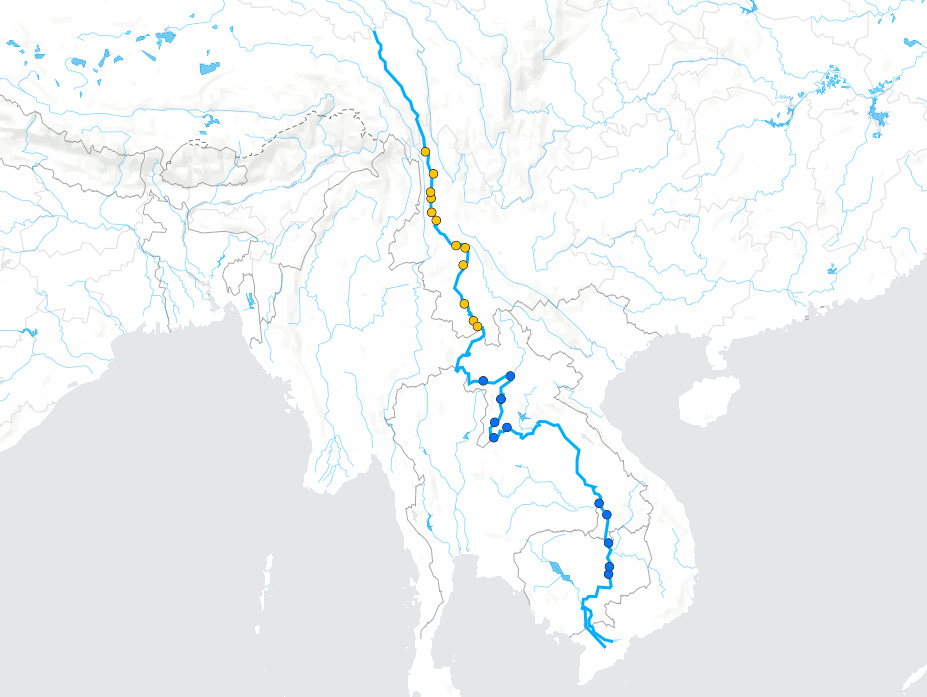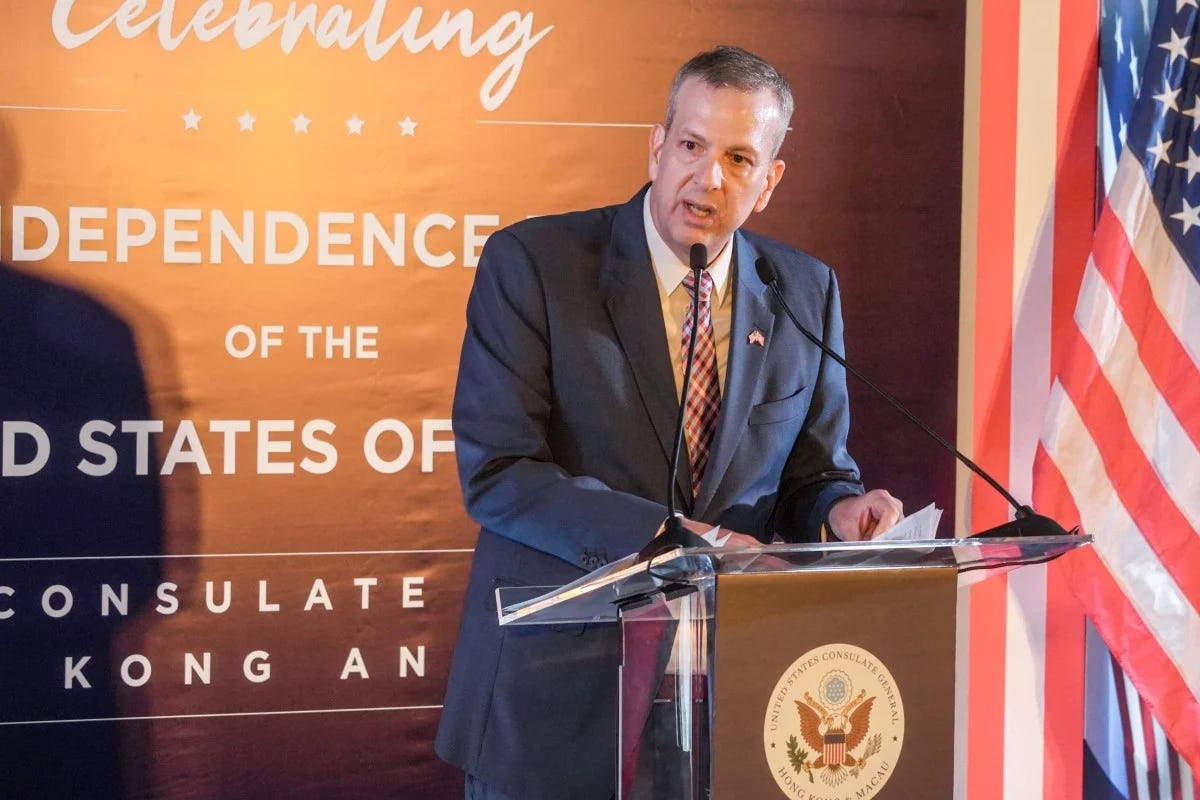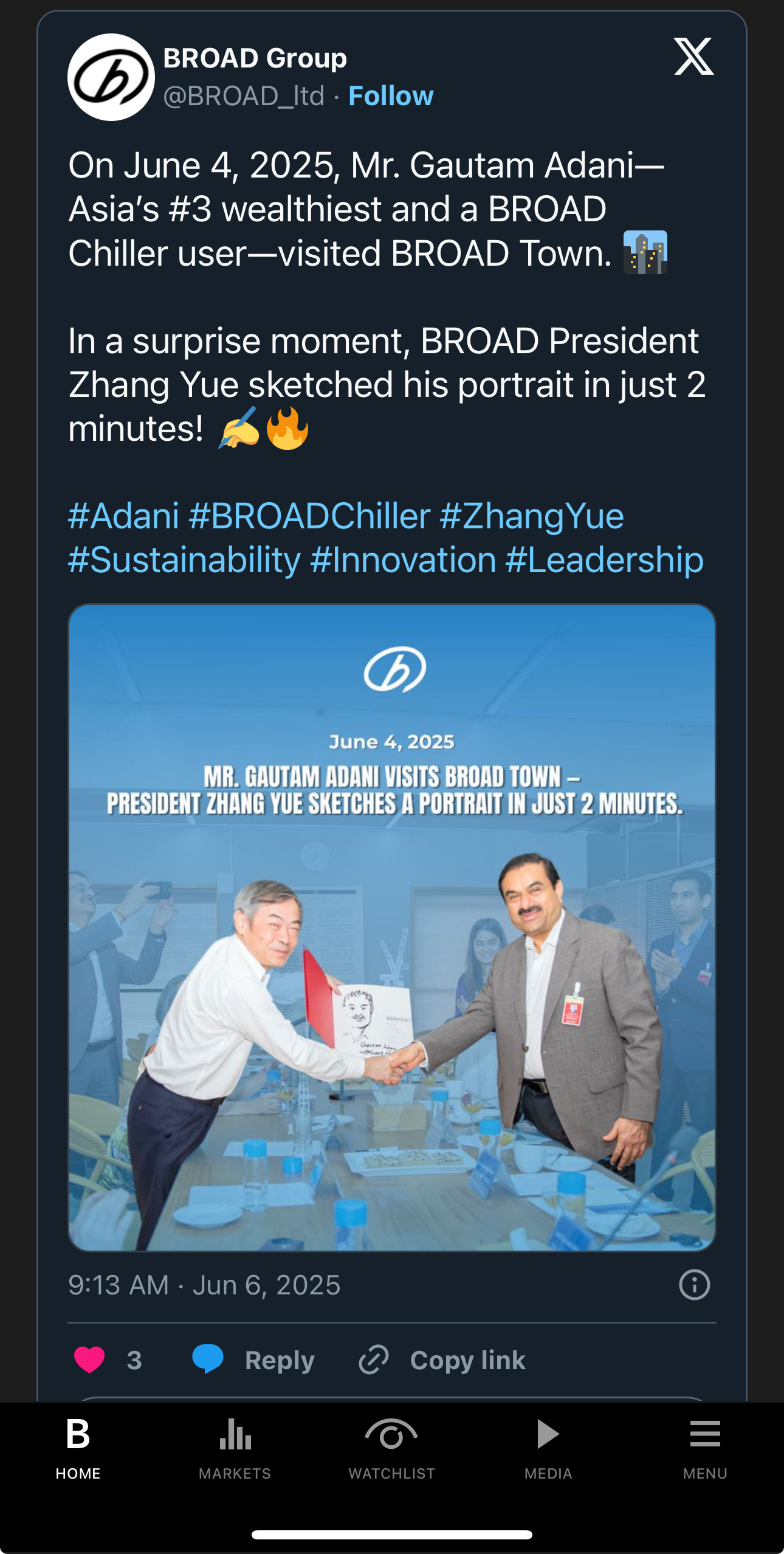China This Week: Rare-Earth Export Limits, Africa Tariff Relief, and Who Owns the Dying Mekong?
This week in China, we explore key developments in its domestic and foreign policy landscape — including how China's upstream dams are turning the Mekong into a tool of regional power.
China Quote 🗩
“If we shut down, our workers will lose their income and won’t be able to receive a pension, Closing would cause huge social problems for our area,”
Megan Xiao, daughter of Chairman of Shaanxi Qinyang Changsheng Brewing Co.
Who Owns the Dying Mekong?

The Tonle Sap was once an abundant river flowing through Cambodia. Now when Vannak cast’s his fishing net into the waters, the net comes up nearly empty. The catfish which sustained generations in his family is disappearing.
The Mekong is one of the greatest living rivers which is being throttled, drained and overused – slowly. The river no longer flows freely. Large scale hydropower projects from China to Vietnam is killing the mighty river that sustains nearly 60 million lives – it is being engineered to gradual death. Unless regional leaders and stakeholders do not intervene to reverse the situation – the Mekong will not only cause an ecological disaster but also a geopolitical crisis.
The Crisis – Damns, Dying Rivers and Climate Migration
China has nearly 11 major damns build on the upper end of the Mekong or the Lancang (as known in China). Laos, Cambodia and Vietnam are racing to match Chinese constructions with their own – leading to a severe ecological crisis in the making. There are more than 160 hydropower projects being constructed on the river and its tributaries. Some of the major concerns with these projects are the trapping of sediment, flattening seasonal water pulses and the impeding downstream regions with nutrients vital for fishing and agricultural activities. The consequences have been dire.
The Mekong Delta in Vietnam was once home to over 17 million people. It was a fertile region where rice was grown in abundance. Within the last 5 years – it has lost over 5% of its rice cultivation, freshwater fish populations are reduced, saltwater intrusions are rising making land uncultivable, and farmlands are drying. Cambodia is in a similar state with 30-50% reduction in fishing being reported. Rice paddies that were once lush due to the Mekong overflowing, fail to thrive because of the erratic opening of upstream damns.
Alongside the environmental cost, the human cost of the crisis is high too. The rural poor in these countries are being displaced and forced out of ancestral livelihoods. Farmlands are being abandoned for urban slums while women bear the cost of food security and care work which remains mostly unpaid.
China’s Hydraulic Control in the Mekong
The Mekong River Commission (MRC) was created in 1995 with the objective of preserving the river and fostering cooperation among the riparian countries. In effect, it is a weak institution with no veto power or any legal authority to enforce any decisions. Given that most of the hydropower projects are national and not regional – the MRC is in total a failed institution. Its recommendations and resolutions are often ignored and unheard – like the 10-year moratorium recommendation it made in 2010 on mainstream damn construction.
To add to its troubles, China is not a member of the MRC but controls the source of flow of the river. It is not transparent in its ways and exerts full control over downstream river flow. China acts unilaterally and often like a bully when it comes to water sharing. China has often withheld water from the lower river during droughts as observed in 2019 and 2020. It exerts undue control over countries like Laos and Cambodia which depend on Chinese loans and energy exports. This control exerted by China has allowed it to become a “hydro-hegemon” in the region – as hydropower is used as a geopolitical tool by Beijing.
Chinese infrastructure aid in the Mekong basin, often presented as benevolent development assistance, serves a deeper strategic purpose—hydraulic control. By building and operating a vast network of dams on the river’s upper reaches, China has gained the ability to unilaterally manipulate water flows to downstream countries like Laos, Cambodia, Thailand, and Vietnam.
Through initiatives like the Lancang-Mekong Cooperation framework, China extends technical and financial support while withholding real-time hydrological data, effectively tying aid to political compliance. This creates a form of soft coercion where dependent states are less likely to challenge Beijing’s broader geopolitical interests, revealing how water has become both a lifeline and a lever of influence in mainland Southeast Asia.
Downstream countries have begun to adopt a dam-driven developmental style couched in terms of national interest and energy security. Laos – called the “Battery of South Asia” has approved the construction of multiple dams despite national and international warnings. As a supplier of electricity to Thailand, Vietnam and China – it has approved the construction of several dams – the Xayaburto Dam in 2019, the Don Sahond Dam operation since 2020 and most recently construction on the Pak Beng Dam has begun despite impact assessments spelling out disaster.
The Solution – What Needs to be Done
The Mekong can be salvaged with urgent cross-border action. Firstly, China must be formally integrated in the MRC with binding agreements on data-sharing and accountability. The upstream control of the Mekong needs to be democratised for the riparian countries being better able to manage their hydro needs.
Secondly, a moratorium on new dam projects especially by Cambodia and Loas should be put into place. Cumulative impact assessments should be completed, and all stakeholders should be given equal say in debating matters. Farmers, fishers, women and indigenous communities should have an equal say in matters and be included in decision-making.
Thirdly, alternate sources of energy need to be explored by these countries to not run the Mekong dry. Whether it be solar, wind or biomass energy, more sustainable energy resources must be explored. The international community should provide support and debt relief to countries like Laos and Cambodia.
The Mekong is the shared lifeline of Southeast Asia, and it is bleeding dry. As climate change intensifies the strain through floods, droughts, and rising temperatures, the urgency to act grows. The Mekong is not yet lost. What’s at stake is not just a river, but a regional way of life. Vannak should be able to do what his family has been doing for years with equal pride and ease.
Economic Activity🏦
Premier Li Says Chinese Economy to Sail Steadily Despite Challenges
gov.cn reports that Premier Li Qiang expressed confidence in China’s economic resilience during the ASEAN-China-GCC Economic Forum 2025 in Kuala Lumpur. He stated that the Chinese government and people are well-equipped to maintain stable economic growth amid future challenges, likening the economy to a steady and enduring ship.
Chinese Firms May Join Bid for Li Ka-shing’s Global Ports
Bloomberg reports that China Cosco Shipping and other Chinese state-backed firms are in talks to join a consortium led by Terminal Investment Ltd. to buy Li Ka-shing’s 43 global ports. The move aims to ease Beijing’s concerns over the sale, which includes strategic Panama Canal ports, and could net CK Hutchison over $19 billion.
Beijing Puts Six-Month Limit on Rare-Earth Export Licenses
The Wall Street Journal reports that China has imposed a six-month limit on rare-earth export licenses to U.S. automakers and manufacturers. The move follows trade talks in London where Beijing agreed to resume exports, but the short time frame keeps pressure on the U.S. and highlights China’s leverage amid fragile trade truce efforts.
China’s Exports to the U.S. Clock Their Sharpest Drop in Over 5 Years — Down Over 34% in May
Anniek Bao writes in CNBC that Chinese exports to the U.S. plunged 34.5% year-on-year in May, the steepest drop since early 2020, as prohibitive tariffs disrupted trade before a mid-month ceasefire. While overall exports rose 4.8%, shipments to Southeast Asia, the EU, and Africa surged. Analysts expect modest recovery in June as tariff cuts take effect.
New China Trade ‘Deal’ Takes U.S. Back to Where It Started
Ana Swanson writes in The New York Times that a tentative U.S.-China trade truce has rolled back measures from recent tariff escalations, but critics argue it achieves little beyond restoring the pre-conflict status quo. Analysts warn that Washington’s concessions—especially on export controls—undermine long-held national security norms and could embolden China in future trade negotiations.
China Offers Total Tariff Relief for Africa
Preeti Jha reports in Semafor that China has pledged to remove all tariffs for imports from 53 African countries with which it has diplomatic relations. The announcement, made during a ministerial meeting in central China, signals Beijing's strategic pivot amid trade tensions with the U.S. and contrasts sharply with Washington’s escalating tariffs, including potential duties of up to 50% on African exports. Eswatini, which recognises Taiwan, is excluded.
Inside China🐉
Xi’s Generals Face a Perilous Political Battlefield
Katsuji Nakazawa writes in Nikkei Asia that the confirmed purge of General He Weidong, a sitting vice chairman of China’s Central Military Commission, highlights the deepening political purges within the PLA under Xi Jinping. The dramatic fallout reflects a growing climate of suspicion, factional rivalry, and consolidation of power within China's top military ranks.
BRI Conference Calls for International Tech Partnerships
China Daily reports that senior officials at the second Belt and Road Conference on Science and Technology Exchange in Chengdu urged global cooperation on AI, warning of growing digital disparities. The forum unveiled 10 AI application scenarios for Belt and Road nations and proposed initiatives like a cross-border venture capital fund to support sustainable tech startups.
China and the World🌏
Chinese fighter jet in near miss with Japanese military plane as Pacific tensions rise
The Guardian reports that a Chinese J-15 fighter jet flew within 45 metres of a Japanese patrol aircraft near Okinotori Island, prompting Japan to lodge a formal protest. The near miss occurred during dual aircraft carrier drills by China in the Pacific, raising regional concerns about Beijing’s expanding naval assertiveness and risk of accidental military conflict.
The Mysterious Loss of an Airbus Satellite Sold to Azerbaijan
Antoine Izambard writes in Intelligence Online that the SPOT-7 satellite, sold by Airbus to Azerbaijan, mysteriously ceased functioning in March 2023. French military sources suspect Chinese interference, potentially linked to an intelligence operation detected near Airbus facilities in Toulouse. The incident highlights rising espionage tensions involving France, China, and key aerospace assets.
Gautam Adani Visits China Amid US Legal Scrutiny to Advance Renewable Push
South China Morning Post reports that Indian billionaire Gautam Adani travelled to China to meet solar and wind equipment firms, including Jinko Solar and Broad Group, signalling renewed focus on renewable energy despite facing US bribery charges. The visit suggests a cautious revival of Adani’s international engagements and potential scope for improved China-India business ties.
Friends or Foes: Russia-China Relations and the FSB Intel Leaked Document
Giuliano Bifolchi writes in SpecialEurasia that a leaked Russian FSB document reveals China is viewed as a major intelligence threat despite official rhetoric of partnership. The memo accuses Beijing of espionage targeting Arctic plans, Ukraine operations, and military tech. The leak exposes underlying strategic mistrust, offering the West an opportunity to exploit cracks in the Sino-Russian alliance.
Top US envoy in Hong Kong may be headed for senior role in Beijing embassy

South China Morning Post reports that Gregory May, current US consul general for Hong Kong and Macau, is expected to assume a ministerial-level post at the US embassy in Beijing. Known for his outreach efforts and deep China experience, May is likely to serve as deputy to Ambassador David Perdue amid critical US-China trade negotiations and diplomatic reshuffles in Beijing.
China-backed militia secures control of new rare earth mines in Myanmar
Reuters reports that the China-aligned United Wa State Army is safeguarding new rare earth mining operations in Myanmar’s Shan state, aiding Beijing's efforts to secure critical minerals amid a trade war with Washington. The mines are reportedly run by Chinese-speaking managers and mirror previous extraction operations in Kachin, offering China strategic leverage through rare earth supply control.
Tech in China🖥️
China Approves World’s Biggest Amphibious Plane for Mass Production

Alisha Rahaman Sarkar writes in The Independent that China has approved the AG600 Kunlong—the world’s largest amphibious aircraft—for mass production. Developed to boost military modernisation, the Boeing 737–sized seaplane is designed for firefighting and maritime rescue. Its production marks a milestone in China’s aviation sector, with strategic relevance to operations in the South China Sea.
De/Cypher Data Dive📊
China dominates the global supply of rare earths, including controlling more than 90% of the world’s processing and refining. It also has an edge in most other critical minerals, such as refined gallium, of which it controls 98.8% of the output.
Image of the Week📸
— — —
Microessay By Priyanka
Data By Bhupesh
Edited By Aurko
Produced by Decypher Team in New Delhi, India



